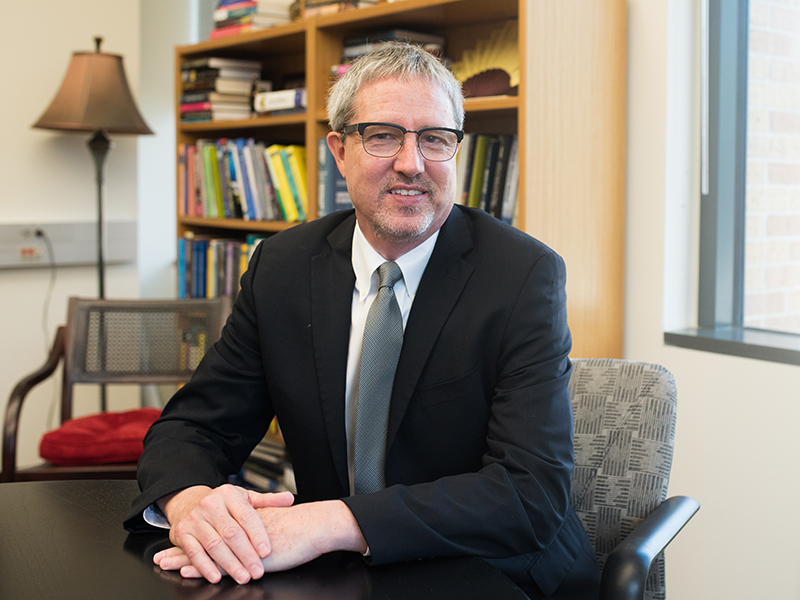Clint Dawson Named Next Chair of Aerospace Engineering and Engineering Mechanics

The Cockrell School of Engineering has named distinguished professor and computational engineer Clint Dawson as the new chair of the Department of Aerospace Engineering and Engineering Mechanics. He will begin his appointment on Sept. 1, 2020, succeeding the department’s current chair, Noel Clemens.
Dawson has served as a professor in the Cockrell School for nearly 25 years and holds the John J. McKetta Centennial Chair in Engineering. He is currently the associate chair of computational engineering and leads the Computational Hydraulics Group in The University of Texas at Austin’s Oden Institute for Computational Engineering and Sciences.
“During his time at UT, Clint Dawson has provided excellent leadership and played an important role in the department’s growth and success,” said Sharon. L. Wood, dean of the Cockrell School. “Not only is he a highly accomplished researcher who has contributed pioneering studies to help mitigate natural disasters, he is also a passionate educator who played an important role in forming our undergraduate program in computational engineering, which is one of the first in the nation. We are thrilled to have him join our leadership team and look forward to seeing what he will accomplish as chair.”
A native Texan, Dawson earned his B.S. and M.S. in mathematics from Texas Tech University and his Ph.D. in mathematical sciences from Rice University. His research focuses on disaster analytics and predictive modeling, including flow and transport problems in computational fluid dynamics; scientific computing and parallel computing; hurricane storm surge modeling and rainfall-induced flooding; groundwater systems, flow in porous media and geochemistry; and data assimilation.
Dawson’s research in disaster analytics — gathered using the supercomputers at UT’s Texas Advanced Computing Center — has been pivotal to the development of storm surge prediction models. His work has helped the university become a recognized leader in analyzing weather patterns and preparing cities and emergency response units for catastrophic, weather-related events, helping to save lives in the midst of natural disasters like Hurricane Harvey.
Dawson has authored or co-authored more than 165 technical articles; chaired the Society for Industrial and Applied Mathematics Activity Group on Geosciences; and served on numerous editorial boards. He received the Society for Industrial and Applied Mathematics Geosciences Career Prize in 2013 and was named a fellow of the Society for Industrial and Applied Mathematics in 2016. He is currently a co-managing editor of the journal Computational Geosciences.
Current chair Noel Clemens has served in the role since 2012, and the department’s significant growth and success is a testament to Clemens’ leadership throughout his tenure, during which he oversaw a relocation from the department’s longtime home in the W.R. Woolrich Laboratories building to the newly renovated Aerospace Engineering Building, positioned the department for future success through the hiring of 14 faculty members, introduced the computational engineering undergraduate program, expanded the department’s research portfolio to include a significant emphasis on robotics, and enhanced hands-on learning experiences in rocketry for students through a collaboration with Firefly Academy.
The department’s undergraduate and graduate aerospace engineering programs rank among the top 10 programs in the nation, according to U.S. News and World Report. With 33 faculty members, over 800 students and over 4,500 alumni living worldwide, the department continues to grow in reputation and prestige as students, faculty and alumni develop cutting-edge technologies and apply them toward solving some of the world’s most complex problems in aerospace engineering, computational engineering and engineering mechanics.
